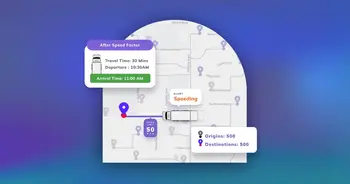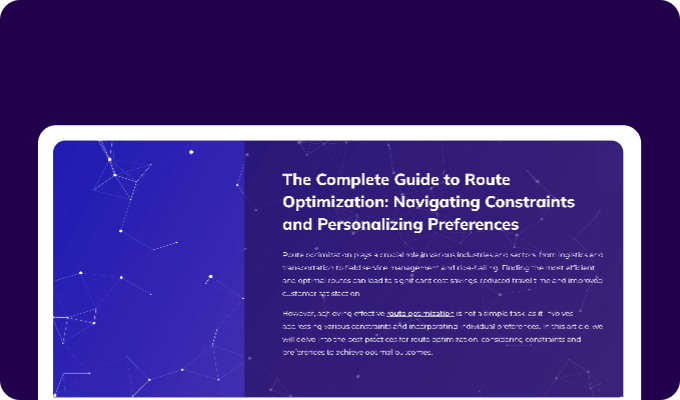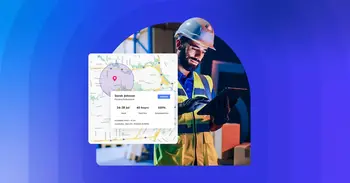On-demand deliveries have become a vital part of our daily lives, with more and more people relying on them for everything — from groceries and meals to packages and documents.
However, providing on-demand delivery is not without its challenges.
One of the biggest challenges is route optimization. In this article, we’ll take a look at five key challenges of on-demand delivery and how route optimization can help overcome these obstacles.
-
Resilience against unexpected disruptions
Unpredictable events can present a significant challenge for on-demand delivery companies, as they can disrupt the smooth functioning of the delivery process and lead to delays or other issues for customers. Some examples of unpredictable events that might affect on-demand delivery include:
- Traffic accidents or other road closures can delay the arrival of delivery drivers
- Inclement weather can make it difficult or unsafe for drivers to navigate the roads
- Unforeseen delays at the pick-up or drop-off locations, such as when a customer is not home to receive their delivery
- Changes in customer demand can create unexpected spikes or dips in the volume of orders
To address these challenges, on-demand delivery companies must have systems in place to adapt to unpredictable events and minimize their impact on the delivery process. This might involve using real-time traffic data to route around delays, or implementing contingency plans to deal with adverse weather conditions.
-
Optimization for operational constraints
Operational constraints refer to the limitations and restrictions that an on-demand delivery company must take into account when planning and executing deliveries. These can include a variety of factors, such as the availability of delivery drivers, the capacity of the delivery vehicles, the location and operating hours of the pickup and drop-off locations, and any legal or regulatory requirements that must be followed.
Optimizing for operational constraints in on-demand delivery can be a challenge, as it requires finding the right balance between meeting the needs of customers and maximizing the efficiency and profitability of the delivery process. For example, a company may need to decide between accepting a high volume of orders that may be difficult to fulfill within the available resources, or turning away some orders in order to maintain a high level of service for existing customers.
-
Effective fleet management
Effective fleet management is a critical challenge for on-demand delivery companies as it involves managing and optimizing the resources used to make deliveries. This includes managing the vehicles, drivers, and other assets used in the delivery process.
Effective fleet management is crucial for on-demand deliveries as it can help businesses to improve the efficiency of their operations, lower costs, and improve the customer experience. When done right, it can help to minimize the risk of delays, reduce fuel costs, and improve the utilization of vehicles and drivers, which in turn can help increase customer satisfaction and retention.
-
Efficient order batching and dispatch
Efficient order batching and dispatch refers to the process of grouping together multiple delivery orders and then assigning them to a driver or delivery vehicle in the most optimal way. This is a critical challenge for on-demand delivery companies as it can greatly affect the overall efficiency and cost-effectiveness of the delivery process.
One of the main issues with on-demand deliveries is that orders are placed at different times and locations, making it difficult to group them efficiently. Additionally, factors such as traffic, weather, and delivery time windows can also affect the optimal route for a driver. Therefore, to improve the efficiency of order batching and dispatch, a company may use optimization algorithms and real-time data to determine the best routes, grouping orders that are geographically close together and ensuring that drivers are dispatched to areas where they can make the most deliveries in the least amount of time.
-
Delivery address accuracy
The Last Mile report by Accenture suggests that a significant percentage of last-mile deliveries, ranging from 5-10%, do not reach their intended destination. This can result in significant financial costs, with each failed delivery incurring an estimated expense of $5.
One of the main reasons for failed deliveries is packages shipped to the wrong addresses. This can be caused by a variety of factors such as customer error, drivers under pressure to meet deadlines, and misreading addresses. Not only do failed deliveries increase expenses for companies, but they also have a detrimental environmental impact. Furthermore, it can also harm a company’s reputation, as customers may choose to patronize more reliable businesses.
Innovation is the best bet against disruption
Point 1 – By building a custom on-demand delivery solution with NextBillion.ai, companies can use machine learning and predictive analytics to anticipate and prepare for unpredictable events. For example, our Route Optimization API uses historical data to identify patterns that can help companies forecast changes in customer demand or predict when certain types of disruptions are likely to occur.
Point 2 – To optimize for operational constraints, businesses need to find the right balance between meeting customer needs and maximizing the efficiency and profitability of the delivery process. NextBillion.ai offers on-demand delivery services the opportunity and platform to find this balance, and ensure high performance does not come at the expense of cost savings.
Point 3 – With us, logistics and on-demand delivery teams can ensure that the right vehicles are used for the right deliveries. NextBillion.ai’s Route Optimization API can solve scheduling and routing challenges most efficiently and help companies to minimize costs and improve delivery times. Additionally, location intelligence derived from custom map data can help track the fleet and monitor driver behavior in real time. This will enable services to ensure that vehicles are used optimally and that any issues are identified and addressed quickly.
Point 4 – We enable on-demand delivery teams to optimize order batching and dispatch, which in turn leads to increased productivity, cost savings and better customer experience. The more efficient the process is, the more quickly and cost-effectively packages can be delivered, which can help increase customer satisfaction and retention.
Point 5 – Nevertheless, achieving address accuracy, along with generating accurate ETAs, are two of the key offerings of NextBillion.ai’s Route Optimization API. With address validation capabilities, on-demand delivery teams can ensure the right addresses and locations are set when planning deliveries, leading to a substantial reduction in failed deliveries.
Overall, the key to effectively dealing with unpredictable events in on-demand delivery is to have a flexible and adaptable system that can quickly respond to changes and ensure that orders are delivered as smoothly as possible.
Overcome on-demand delivery challenges
On-demand deliveries present a range of challenges for businesses, including unexpected disruptions, optimization for operational constraints, effective fleet management, efficient order batching, and delivery address accuracy. These challenges can greatly affect the efficiency and cost-effectiveness of the delivery process, and can also impact the customer experience.
Businesses must strive to address these challenges proactively by implementing strategies such as real-time data analysis, optimization algorithms, and effective fleet management techniques. By leveraging NextBillion.ai’s solutions to effectively manage these challenges, businesses can ensure that they can meet the growing demand for on-demand deliveries while also delivering a high level of service to their customers.




